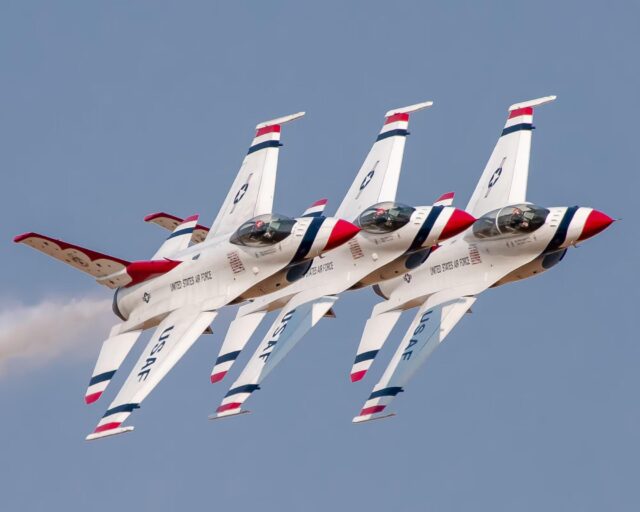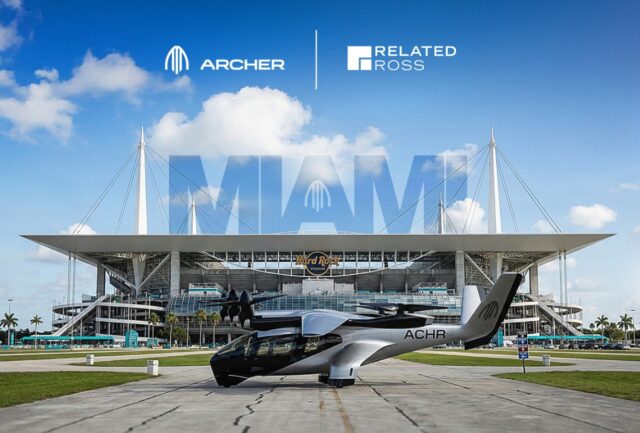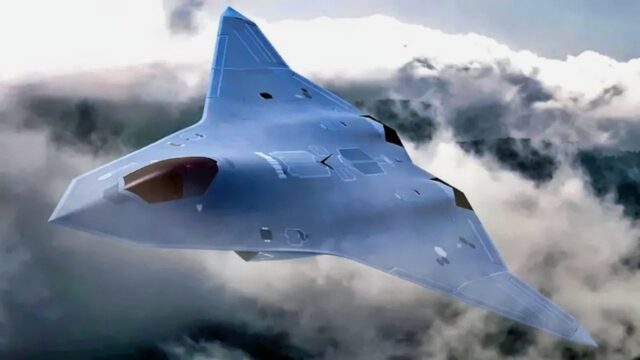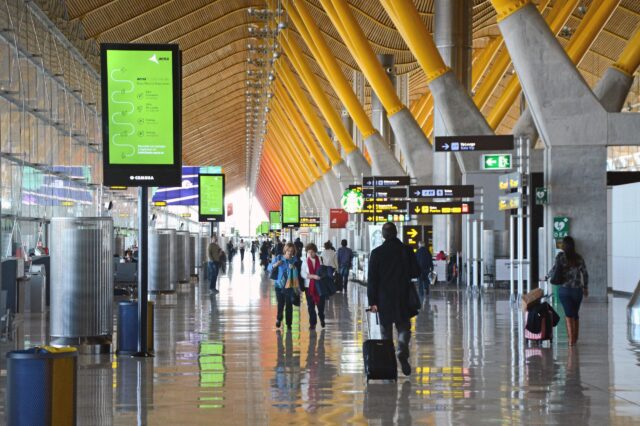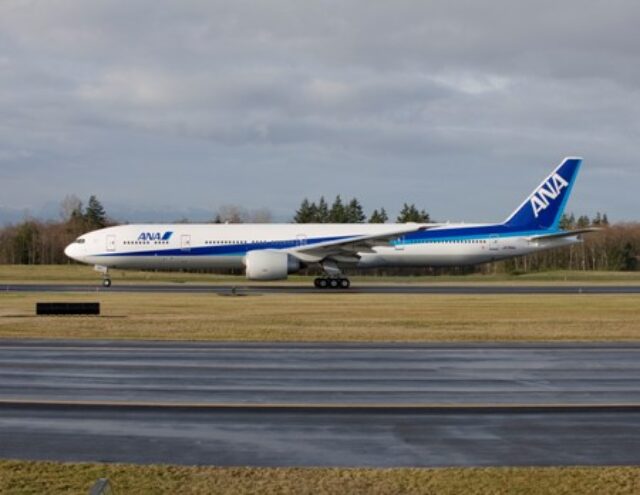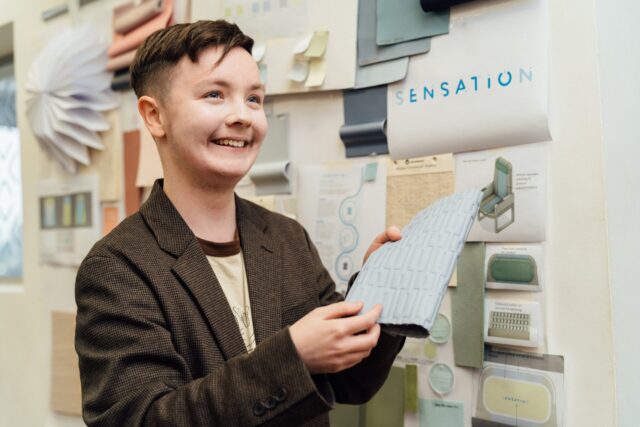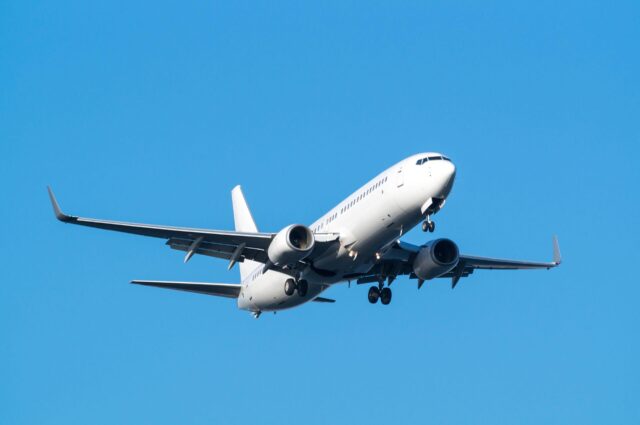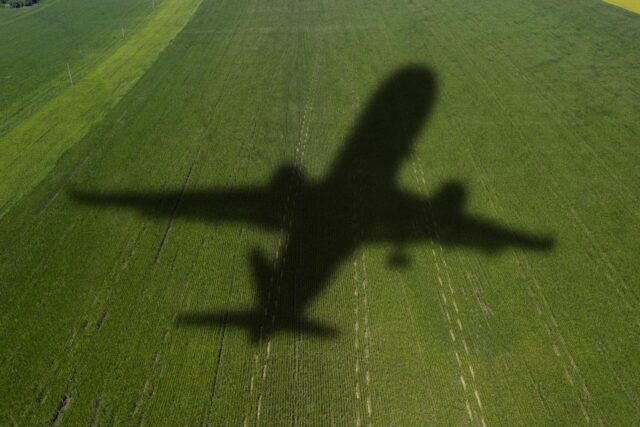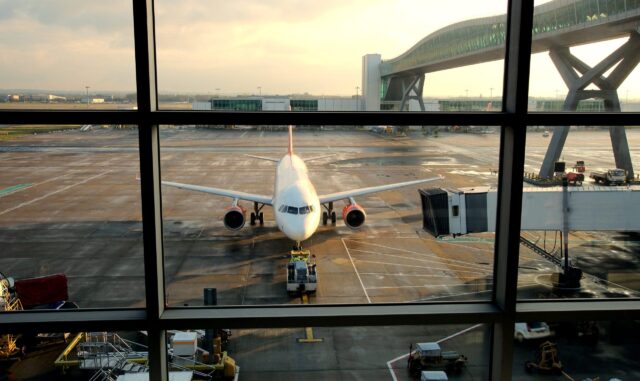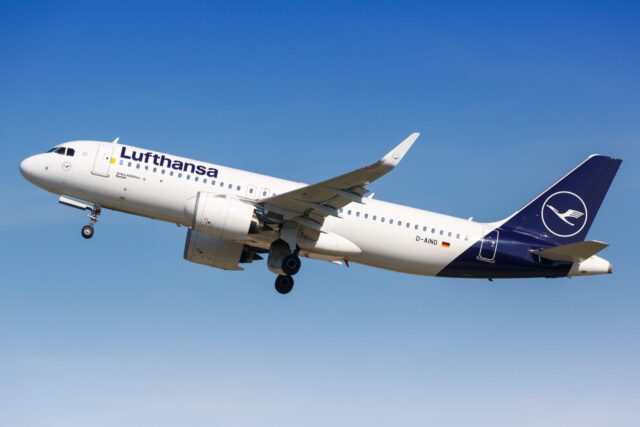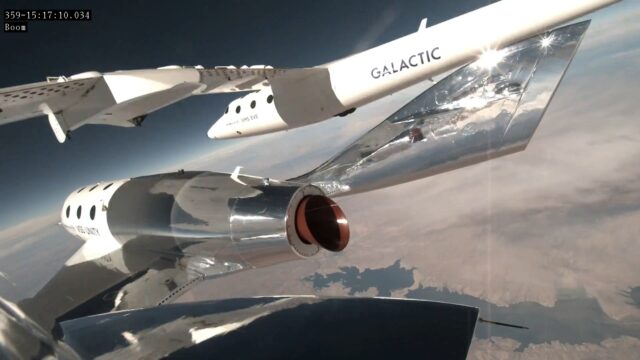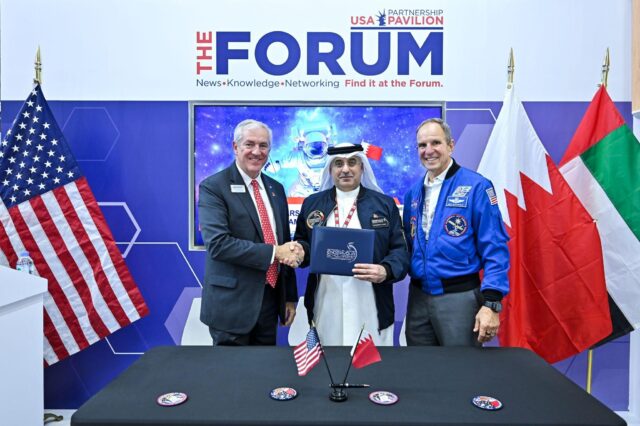Disloyal Wingmen? CCAs once intended to partner the new NGAD may now ‘get jiggy’ with F-35As and B-21As as well, or even instead!
January 12, 2025

Collaborative Combat Aircraft were originally conceived as part of the USAF’s Next Generation Air Dominance system of systems, intended as unmanned adjuncts to the NGAD manned fighter, and fulfilling a variety of functions, including operating ‘up threat’ in the most congested airspace, conducting stand-in jamming, carrying weapons for direct kinetic attack against air and ground targets, and extending the sensor range of a friendly formation.
The CCAs would not each be capable of carrying out all these functions, but instead these capabilities would be disaggregated, divided among different CCAs (which might be modular or convertible between missions). But an enemy would have to assume that all the CCAs were similarly and equally capable, and respond accordingly.
The eventual plan is for multiple thousands of CCAs to be delivered across a number of eventual increments. Initially the plan was to deploy at least 1,000 uncrewed CCAs with two CCAs being paired with each of 200 NGAD platforms and 300 F-35As.
But the NGAD manned fighter’s future is uncertain, and many within the Air Force doubt its affordability, and even its long term operational utility. Development has been put on hold while the programme undergoes a review and an analysis of alternatives, but there seem to be no such constraints on the CCA programme.
Outgoing Air Force Secretary Frank Kendall has said that he regards launching the CCA programme and getting the first increment on contract as being one of his signature achievements as secretary, calling CCAs “a transformative capability for the Department, for the Air Force.”
The CCA programme will leverage a range of existing crewed-uncrewed teaming efforts, including the Defense Advanced Research Projects Agency’s Air Combat Evolution (ACE) programme, the AFRL Skyborg programme and Boeing Australia’s Airpower Teaming System based on the MQ-28A Ghost Bat.
The ACE programme sought to develop autonomous air combat capabilities, pitting AI-powered software to dogfight human-flown aircraft in a synthetic environment.
Under Skyborg, an autonomous core system was developed using the MQ-20 Avenger, Kratos XQ-58 Valkyrie and Boeing MQ-28 Ghost Bat, as well as the X-62A Variable In-flight Simulation Test Aircraft (VISTA). The X-62 was flown by an artificial intelligence agent, becoming the first tactical aircraft flown by AI, and will be used to “parallelize the development and test of cutting-edge artificial intelligence techniques with new uncrewed vehicle designs,” rapidly maturing autonomy for future uncrewed platforms and allowing the more rapid delivery of tactically relevant capability to the warfighter.
A number of experimental activities are underway, including the Air Force Research Laboratory (AFRL) Low-Cost Attritable Aircraft Platform Sharing programme, which has already produced the GA-ASI XQ-67A Off-Board Sensing Station (OBSS) UCAV. The XQ-67A made its maiden flight in February 2024 and became the basis of GA-ASI’s Increment One CCA design.
The Viper Experimentation and Next-gen Operations Model–Autonomy Flying Testbed programme (VENOM-AFT) will use six F-16C fighters with an AI-enabled self-flying capability (though a human safety pilot will be carried) to test and refine the autonomous software for the CCA project.
Lockheed Martin is reportedly investing in the technology needed for the F-35A (and perhaps the F-22A) to simultaneously control multiple CCAs using a tablet interface. This would suggest that the USAF vision for CCAs is perhaps not all that ‘autonomous’. A UK view of this kind of aircraft (which the British call ‘Autonomous Collaborative Platforms’ or ACPs) sees them as being semi-autonomous, capable of “taking high level direction” from a pilot, and then “autonomously implementing this direction.” Such high level direction might consist of a set of instructions along these lines (provided by an experienced UK fast jet pilot with experience of Harrier, Sea Harrier and F/A-18): “Follow the ATO (air tasking order) outbound to the millimetre. Don’t run out of gas. Don’t transgress any known ACM. Don’t penetrate a known MEZ (Missile Engagement Zone). (I’ll let you know by text if there are any new ones). Don’t leave the FIR (Flight Information Region). Don’t fly into me. Don’t get more than 20 nm from me. Don’t employ weapons without my say so. If you’re near a POI (Point of Interest) and can capture an ISR product please do. If we lose comms for X minutes go back to CAP for Y minutes then RTB (Return to Base). Go home obeying the ATO to the millimetre.” Such a vehicle would require relatively little ‘direct control’ of the type envisaged by Lockheed Martin.
Back in 2019, as the Kratos XQ-58 Valkyrie made its first test flight at Yuma Proving Ground, Will Roper, assistant secretary of the Air Force for acquisition, technology and logistics, outlined a requirement for a loyal wingman that could “perform and manoeuvre like a fighter jet,” flying at high subsonic speeds, taking off without a runway, and that could meet or exceed the Air Force’s requirement for a 1,500-nautical-mile range carrying a 500-pound payload. Roper predicted that these aircraft would cost “a couple of million bucks” each, when produced in volume. The XQ-58A was originally developed under the LCAAT (Low Cost Attritable Aircraft Technologies) programme, but its creator, Kratos, has not been down-selected for the current CCA programme, perhaps indicating that the USAF is looking for a more complex and exquisite solution.
The contracted CCA Increment 1 consists of two variants being developed by Anduril Industries and General Atomics (who are to design, manufacture and test small numbers of production representative flight test articles), and is said to be “moving forward really well.” USAF officials have intimated that they could ultimately buy 100-150 Increment 1 CCAs, which would seem to be sufficient only for development testing and as a ‘learning tool’, giving the US Air Force experience with actually using them in operational units and operational exercises, and to develop new concepts of operations and tactics, techniques, and procedures.
The cost was to be between one quarter and one third of the cost of a manned F-35 – which would work out at somewhere between US $20 million and US $35 million – the exact cost of the F-35A being quoted differently in different US government documents. Australia, though, still hopes to get the price of the Block II MQ-28 down to “10% of the price of an F-35A,” according to Pat Conroy, Australian minister for defence industry.
As he prepared to step down as Air Force Secretary, Frank Kendall revealed some details of the planned Increment 2, work on which was said to be “well underway.”
Kendall said that the Air Force was “sorting through different configurations for Increment 2, and what we want to do there, to get full advantage.”
Hitherto, the Air Force had been unwilling to publicly define the characteristics of Increment 2, and as a result, predictions as to what it would be varied wildly. Some expected a simpler and cheaper, more attritable aircraft than Increment 1 while others predicted a more sophisticated and capable platform optimised to penetrate deep inside contested airspace and conduct independent kinetic attacks.
There has been a distinct shift away from the kind of unmanned ‘loyal wingman’ that were first envisaged to augment and complement manned fighters. These were seen as being unmanned counterparts to the manned combat air platforms they were intended to operate alongside, with much the same capabilities and performance characteristics. Greater emphasis is now being placed on smaller, cheaper and less capable ‘adjuncts’ and ‘effectors’. Even the term ‘Loyal Wingman’ has become problematic. Still widely used (describing an autonomous unmanned aircraft “to be paired with and commanded by a crewed aircraft — particularly combat air”), the RAF’s recent Autonomous Collaborative Platform Strategy labels it as an “outdated term.”
Whereas manned fighters (and ‘classic Loyal Wingmen’) typically carry all the sensor, weapons, EW, communications and countermeasures systems necessary for that fighter to essentially operate alone, networks of CCAs will not all have all the same capabilities, but, working together with a crewed aircraft, will have a cost effective shared and distributed set of capabilities. This promises to keep costs low across development, production, and sustainment cycles. The CCAs will not be expendable, and are not munitions, being sent out to inevitably die, but attrition of small numbers of them will be acceptable in order to gain advantage.
Even Lockheed’s proposal for Increment 1 of the CCA programme (reportedly a higher-end more ‘gold-plated’ design) was rejected, while a 2024 Mitchell Institute for Aerospace Studies flagship report on CCAs highlighted the key importance of ‘lower end’ expendable and attritable systems operating collaboratively with 5th generation and 6th generation combat aircraft as force multipliers, disrupting and imposing costs on a peer or near-peer adversary’s air defences.
In a wargame run by the institute, a mix of lower-end CCA variants operated as airborne sensors, decoys, jammers, or weapons launchers to disrupt and stimulate the PLA’s IADS, locate its critical nodes, and begin to attrit threats in order to support operations by crewed aircraft.
Kendall said that analyses and wargames had indicated that the Increment 2 of the Collaborative Combat Aircraft program should not be a high end “exquisite” aircraft, but that it should have more capability than Increment 1, for which an additional cost of 20-30% would be acceptable – giving a broad cost range of US $24 million and US $45.5 million. This would seem to be at the high end of a CCA that could genuinely represent ‘affordable mass’ – at roughly half the cost of an F-35A.
At one time, the Senate attempted to impose hard cost targets for different tiers of CCAs in the NDAA (National Defense Authorization Act). The Senate had wanted to created general cost categories for CCAs, with a $3 million limit for ‘expendable’ aircraft, $10 million for ‘attritable’ vehicles, and $25 million for ‘exquisite’ CCAs. We now seem to be looking at exquisite pricing for attritable platforms!
But it is the Trump administration that will make the final choice as to exactly what CCA Increment 2 looks like.
Something may have to give.
Kendall has previously said that: “Right now, given our commitments, our resources, and strategic priorities, it’s hard for me to see how we can afford any combination of those new [NGAD, CCA and new generation tanker] designs,” while at the same time admitting that they: “are all tied together, both operationally and from an affordability perspective. We are working… to determine the best combination of capabilities to pursue at various investment levels.” Kendall observed that getting adequate resources to pursue any combination of these projects was: “The variable that concerns me most.”

